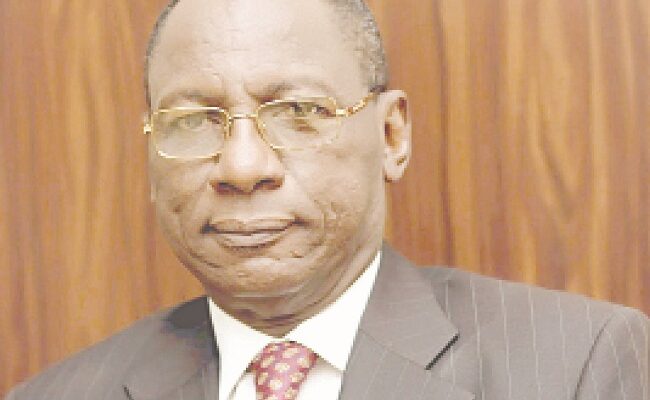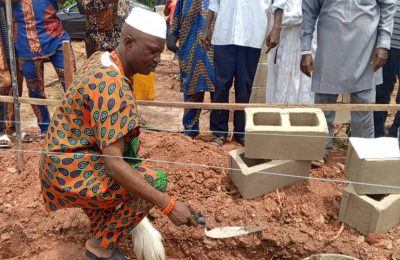

In this interview by Sade Oguntola, Dr Tunji Funsho, a member of the International PolioPlus Committee of Rotary International and past chairman of Nigeria National PolioPLus Committee, says the oral polio vaccine is effective except in cases where the child hasn’t got a good immune response because of malnourishment.
POLIO-FREE countries, including Nigeria, are not polio risk-free. Why is this so, given that children are vulnerable and stand the risk of worsening immunity due to poor access to good food and insecurity?
Polio-free country anywhere in the world is not risk-free. As long as there is any case of wild polio in the world, no country is safe, including developed countries that have been certified polio-free for more than three decades.

That said, vulnerability in any environment is predicated on the level of vaccination of the children. Vulnerable children are generally those below the age of five; if the children are not fully vaccinated against polio, they are vulnerable.
If they are in an environment that is unsanitary, where they can come in contact with the polio virus due to contamination of water from sewage systems or actually getting their water from a poor unhygienic source, that makes them more vulnerable. Those are two critical elements that make our children vulnerable.
The third aspect of vulnerability is decreased immune response due to malnutrition. If a child is malnourished, they will not be able to mount a good immune response. So if they come in contact with the virus, the likelihood that they will be able to fight it off is low.


There are reportedly 35 countries currently identified as polio ‘outbreak’ countries. Given the effectiveness of polio vaccine, why is the outbreak?
That statement is not true; there is no country that is currently identified as a polio ‘outbreak’ country. There is none whatsoever. When you say outbreak, you mean a situation where you have a disease that now starts to occur in large numbers in a community. There’s nowhere in the world right now that we have had a large case of polio since the beginning of this year.
There are two types of polio viruses. We have the wild polio virus which is the polio virus that the world has set out to eradicate since 1985. Now the wild polio virus has not been seen all over the world except for Pakistan and Afghanistan until last year. So far this year, there has been a single case of a wild poliovirus in the world.
Then we have the vaccine variant polio, which is the result of mutation, a case of the virus trying to survive by changing its genetic constitution. Now, we have had the vaccine variant virus because the oral polio vaccine contains weakened polio virus so that it can elicit a good immune response. It is these weakened viruses that are given in the vaccine.
Now, when a child is given oral polio vaccine, the first port-of-call is the intestine where it multiplies. That multiplication is what triggers the body to generate an immune response. If the child develops a good response, the vaccine has been effective and, in most cases, that is what happens except in cases where the child hasn’t got a good immune response because the child is malnourished.
But then the excess of the virus from the intestines gets shed in the stool and enters the environment. Now, if it stays in the environment for enough time for another child to be infected by it, it takes on this cycle and during that cycle because it wants to survive, it will change his genetic composition and become this vaccine variant and the mutation now makes it infective.
The vaccine variant polio causes the same kind of symptoms and effect as the wild polio virus, but it is not the wild polio virus. So, the child may be paralysed when the child’s immune response does not overcome it. That is the only virus that we are seeing in the world now. Last year, we had more than 800 cases of the vaccine variant in the world. So far this year, we have gotten about 42. It is important to make this distinction.
Nigeria is said to have achieved a 99.9 percent reduction of polio cases; any idea where the virus is still hibernating in the country?
The main reason we are having the vaccine variant is that not enough children have had vaccination against polio. Now, we have a new vaccine that has been proven to be very effective in preventing this vaccine variant. That is why we have fewer cases of the vaccine variant but if a child has not had the opportunity of getting this polio vaccine, the child is still vulnerable to come down with polio.
Our main challenge is that we have areas in this country that have very low immunisation coverage, not only for polio but also for other childhood vaccine-preventable diseases like measles, whooping cough and diphtheria. And when that is the case, you just need to bring the vaccine variant virus in contact with a child who is not immunised and if you’re now adding malnutrition to it, the child is going to succumb to the vaccine variant.
How true is the statement that polio cannot be cured but can only be prevented?
Yes, because polio causes damage to the nerves that supply the muscles; it will literally kill the nerves. For your muscles to move, they need to contract and in order to contract, they need stimulation from the nerves based on what the brain has told the muscle to do. The analogy is a situation where power is being generated and there’s breakdown in the transmission line, no matter how much power was generated, you cannot transfer that power and such cannot be supplied for use at the home for lighting. It is the same thing that happens to the muscles. Once those nerves are damaged, it is a permanent thing and that is why we say polio cannot be cured. Once a child gets paralysed, it is not reversible.
What are the unique challenges this variant is creating for polio virus eradication in Nigeria and why?
Our goal is and has always been to eradicate the wild polio virus. As far as Nigeria is concerned, that has been achieved. We have not seen any cases of wild polio virus in Nigeria for almost seven years now. The advent of the circulating vaccine variant viruses is just only about three years now and with the new vaccine, we are going to eradicate that. We are not too concerned about that, looking at the public health perspective. We are almost certain that by the end of this year, we will not see any more cases of this vaccine-derived polio. The rate has dropped sharply from having thousands of them to having less than a hundred in just two years. So that is not a major challenge but the main reason why it is still around is that we are not able to reach some children with the vaccine, either because of insecurity or poor sewage system. But then, it’s not a problem that we are taking lightly. We will continue to make sure that we develop strategies that will make it possible for us to reach even those children in security-compromised environment because majority of our cases are coming from Sokoto and Zamfara axis and, to some extent, Katsina State.
How best can the country leverage on CSOs and NGOs to curb vaccine preventable illnesses in children, particularly polio?
One of the legacies of the polio eradication programme is this partnership between government and non-governmental organisations, including civil society organisations (CSOs), bringing different skills and resources to bear, including funding. Polio eradication is a very expensive venture. Since its inception, almost $25 billion has been expended on eradicating polio. Bill Gates Foundation has been a major contributor to the funds alongside several governments of the world. In the case of Rotary, we have put in 1.5 billion of that amount of money and we will continue to raise funds for that purpose. The partnership has people bringing different resources, but the important thing is that we have a regular ongoing meeting to look at where we are and to see whether we need to make any changes to our approach.
Also, in Nigeria, we have what we call the expert review committee, which monitors what progress has been made in the last six months and what needs to be done in the next six months.
Polio was ranked lowest after monkeypox, Chikungunya and Rift Valley Fever in Africa’s CDC ranking of epidemic prone diseases for its strategic planning. How do you see this rating and what will be its implications on ending polio in the world?
Definitely, it is a long time ago that polio was identified as an epidemic disease; it is just because we want to eradicate it that we brought it to the front burner of our effort. Polio is not in that group anymore because we are not seeing polio in any large numbers coming up in a very short period of time in any community anymore. It was an epidemic maybe in the 50s when we were having large numbers of children across the world being paralysed by the disease almost on a daily basis. We hope that at the rate we are going now, we will get to the end of polio by 2026.








